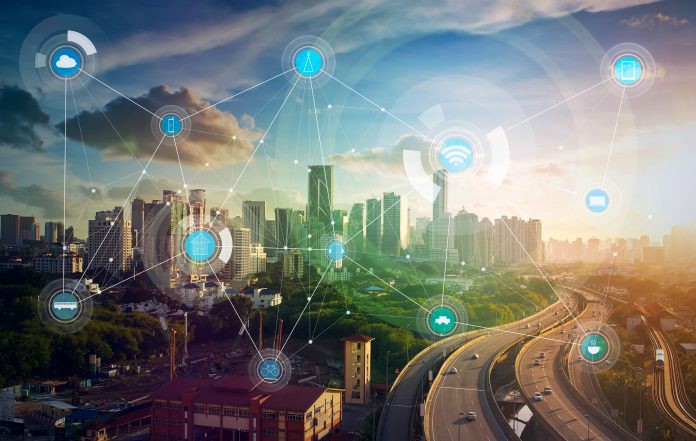Regardless of the level of economic development of a country, infrastructure has always been a cornerstone of prosperity: it is infrastructure that moves people and goods, powers production facilities, and offers space for housing and commerce. Today, when more than half of the world’s population lives in cities, safe and efficient infrastructure is more and more crucial for maintaining economic sustainability and achieving economic growth.
Although it is one of the highest priorities for governments, infrastructure development remains a pain point for developing — as well as developed — countries. It goes without saying that investments in infrastructure development are vital for the long-term prosperity of a country and society as a whole. However, this doesn’t negate the fact that infrastructure is costly to build and even more costly to maintain.
The majority of experts agree that there is an increasing gap between the resources needed for infrastructural development worldwide and resources allocated to it. According to an estimate by Global Infrastructure Hub, a minimum of $97 trillion should be invested in infrastructure projects by 2040 to fuel global development. This is something governments are not prepared for. This situation is further deteriorated by the fact that infrastructure projects are not sought after by private investors, mainly, because of the long-term nature of the returns.
However, digitalisation and information technology have the capacity to increase resources by changing the infrastructure investment model at its core. With the ‘Internet of Things’, which connects all devices and systems into one technological ecosystem, infrastructure maintenance will no longer be the money-consuming part of an infrastructure project. This will significantly decrease the overall cost of this smart infrastructure. Introducing such elements into infrastructure projects, from roads to power systems and buildings, will help to save between 25% to 40% of costs, making infrastructure development more affordable for governments and lucrative for investors. Apart from making infrastructure projects more financially viable, the Internet of Things can also contribute to the economic development worldwide. Even today, while being relatively rarely used, intelligence infrastructure is helping smart cities to dominate in the global economy. While being home for only 55% of the world’s population, smart cities nonetheless generate 85% of the world’s GDP.
Despite of its impressiveness, the Internet of Things is the technology that will become a part of our every-day life in the near future. A recently released report by Persistence Market Research determined that the worldwide smart cities market with its intelligence infrastructure would grow by more than 19% in the next 10 years to reach $3.48 trillion by 2026, which means that it is a high time for investors of all levels, from government to private ones, to rethink their investment strategies, if they don’t want to become trapped by old technologies.
The key to this layer is having access to data. We therefore need to discuss how the data-lakes that commercial players have amassed can be moved into multi-stakeholder frameworks so all citizens can profit from these smart city services. We envision a growing Digital Divide that will become noticeable in real life as well as smart gated communities flourish and public spending efforts go down as governments are losing agency on the new gold: data. In addition to that, fast and reliable access to the data can become a cornerstone of the future economic and technological development, by laying a foundation to developing new technologies that will make a difference. It is therefore necessary to reevaluate the role of engineers at the level of decision making as machine learning, Big Data and smart analytics are becoming more important in the actual decisions on the ground.
In the view of current situation in infrastructure investment and taking into consideration all of the short-term and long-term benefits intelligence infrastructure could bring, DOC Research Institute will continue researching this topic, under its Infrastructure as the Backbone of Global Inclusive Development research agenda.
This post appeared on doc-research.org on December 12, 2017.

